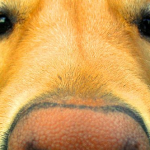 Weird Stuff
Weird Stuff  Weird Stuff
Weird Stuff  Our World
Our World 10 Ways Your Christmas Tree Is More Lit Than You Think
 Movies and TV
Movies and TV The 10 Coolest Stars to Set Sail on The Love Boat
 History
History 10 Things You Didn’t Know About the American National Anthem
 Technology
Technology Top 10 Everyday Tech Buzzwords That Hide a Darker Past
 Humans
Humans 10 Everyday Human Behaviors That Are Actually Survival Instincts
 Animals
Animals 10 Animals That Humiliated and Harmed Historical Leaders
 History
History 10 Most Influential Protests in Modern History
 Creepy
Creepy 10 More Representations of Death from Myth, Legend, and Folktale
 Technology
Technology 10 Scientific Breakthroughs of 2025 That’ll Change Everything
 Weird Stuff
Weird Stuff Ten Bizarre Facts About The Doge Meme
 Our World
Our World 10 Ways Your Christmas Tree Is More Lit Than You Think
 Movies and TV
Movies and TV The 10 Coolest Stars to Set Sail on The Love Boat
Who's Behind Listverse?

Jamie Frater
Head Editor
Jamie founded Listverse due to an insatiable desire to share fascinating, obscure, and bizarre facts. He has been a guest speaker on numerous national radio and television stations and is a five time published author.
More About Us History
History 10 Things You Didn’t Know About the American National Anthem
 Technology
Technology Top 10 Everyday Tech Buzzwords That Hide a Darker Past
 Humans
Humans 10 Everyday Human Behaviors That Are Actually Survival Instincts
 Animals
Animals 10 Animals That Humiliated and Harmed Historical Leaders
 History
History 10 Most Influential Protests in Modern History
 Creepy
Creepy 10 More Representations of Death from Myth, Legend, and Folktale
 Technology
Technology 10 Scientific Breakthroughs of 2025 That’ll Change Everything
10 Times Nature Invented Something Before Humans Did
Humans may like to think we’re the pinnacle of innovation, proudly basking in the glow of Wi-Fi routers and smartphones. But digging deeper, you’ll see that much of our genius is drawn from nature’s blueprint. For ages upon ages, plants, animals, and ecosystems have already been fine-tuning the very designs we now proudly stamp with our own names.
Thank you, mosquitoes, for the hypodermic needle. You served a purpose, after all. As for waterproof coatings, nature, quite literally, had that covered. It’s easy to forget the quiet muse behind so many of our breakthroughs. So let’s give credit where credit is due and marvel at how nature’s brilliance inspires some of the gadgets and systems we call our own.
Related: 10 Places Where People and Nature Coexist Perfectly
10 Air Conditioning
While we’re sweating it out until the AC kicks in, termites have been lounging in cool comfort for millions of years. These mounds act as natural air conditioners, ensuring that the temperature inside remains constant and comfortable, regardless of how intense the heat or how chilly the nights get outside. This is all thanks to an incredibly sophisticated system of vents and channels that they construct like pros to allow air to circulate and humidity to be maintained at an optimal level.
Inspired by these tiny dirt-dwelling architects, human engineers and architects have designed energy-efficient buildings that mimic the termite mound’s natural climate control system, enabling better airflow and temperature regulation. This approach, drawing from the termite’s ingenuity, has proven to be a model for more sustainable and eco-friendly buildings. It turns out that termites were into green energy long before it was… cool.[1]
9 Internet Networks
Before we ever logged onto AOL or fought over the Wi-Fi password, fungi were busy running their own underground network. Mycorrhizal networks, fondly called the “Wood Wide Web,” operate with an eerily similar structure to the Internet. These networks allow fungi and plants to communicate with one another.
Through these connections, plants share nutrients, send chemical signals, and even warn each other about potential dangers, such as pests or environmental threats. Essentially, trees are texting each other under our feet, using fungi as their messaging service. So the next time your Wi-Fi drops mid-scroll, remember that nature had this networking thing down ages ago—and it never needs a reboot.[2]
8 Hypodermic Needles
If you think hypodermic needles are a modern marvel of medical technology, think again. Their sleek, efficient design actually owes its inspiration to one of nature’s most irritating creations: mosquitoes. For all the times we’ve cursed the very existence of these backyard vampires, it turns out that mosquitoes possess an incredibly advanced, needle-like appendage that scientists have studied in order to create modern injection technology.
The mosquito’s proboscis, designed to pierce skin without causing pain, is actually a marvel of engineering. It uses a combination of serrated edges, flexibility, and even a built-in anesthetic to stealthily insert itself into the skin and siphon blood, all while keeping us blissfully unaware of the heist.
This mosquito-inspired mechanism has paved the way for medical breakthroughs, including microneedles that could one day revolutionize drug delivery and vaccinations. Pretty sophisticated for a tiny pest, though we could all agree to skip the parasites that often accompany their inspired technology.[3]
7 Waterproof Coatings
When we think of the lotus flower, yoga and meditation might come to mind, but this incredible aquatic plant also boasts a fascinating ability that has made it famous for its water-repellent properties. The lotus leaf is so adept at repelling water that liquid practically slides right off, leaving it dry and clean, much like an indifferent celebrity dodging the ever-present paparazzi.
This floral forte to shed water with ease is the result of a highly specialized surface texture covered in a waxy coating, which creates a hydrophobic barrier. This unique texture causes water droplets to bead up and roll off the surface, taking dirt and grime with them in the process—a phenomenon that’s known as the lotus effect.
However, it’s not just a cool party trick; this natural feature has inspired a range of modern innovations. Scientists have mimicked the lotus leaf’s hydrophobic surface to create waterproof jackets, self-cleaning windows, and stain-resistant fabrics, to name a few. Next time you spill coffee on your waterproof wear, praise the lotus leaf for keeping you dry and dignified.[4]
6 Traffic Flow Systems
When it comes to managing traffic, ants have been running the show for millions of years—and all without the need for traffic lights, honking, or road rage. Their colonies, which can be home to millions of ants, manage the flow of individuals with astonishing efficiency. This is made possible through the use of chemical signals called pheromones, which the ants release to communicate with one another.
These pheromones allow ants to map out paths, avoid congestion, and maintain a steady food supply chain, all while moving with a level of coordination that would make any urban planner envious. Human engineers, baffled by the constant gridlock of city streets and the daily struggle to optimize traffic flow, have started looking to ants for inspiration.
By studying the way ants use pheromones to direct traffic, they’ve been able to design smarter, more efficient traffic flow systems in cities (albeit without the pheromones). It’s fascinating to think these little creatures manage rush hour without traffic lights, horns, or angry tweets. Who knew the real road warriors were only a few millimeters tall?[5]
5 Velcro
Ah, Velcro—the glue of the fashion world, dutifully clutching onto your shoelaces, backpacks, and astronaut suits. What many people don’t realize, however, is that Velcro also owes its existence to a seemingly mundane yet incredibly clever natural invention. That invention comes from burdock burrs, those little seed pods that latch onto your socks, your dog, and probably your sanity during a walk in the woods.
In the 1940s, Swiss engineer George de Mestral took his dog on a hunting trip, resulting in an array of burrs on his clothes and his dog’s fur. Likely annoyed but also intrigued, he examined the burrs under a microscope and discovered the secret behind their sticking power: tiny, hook-like structures that caught onto the loops of fabric.
Inspired by this, de Mestral set out to create a man-made version, and thus Velcro was born, a portmanteau of “velvet” and “crochet,” a blend of science and snagging to make life both simpler and noisier. It’s as if, with the guidance of human hands, burrs shapeshifted into the most iconic and useful inventions of the 20th century, appearing in countless applications from clothing to space suits.[6]
4 Adhesive Technology
Geckos aren’t just adorable little creatures with an impressive ability to defy gravity—they’re also the unsung pioneers of modern adhesive technology. These small reptiles have an extraordinary ability to scamper up walls and across ceilings without the use of sticky substances or adhesives. This remarkable feat is made possible by the microscopic hairs, called setae, on their feet.
These setae branch into even smaller structures called spatulae, creating an enormous surface area that allows them to generate a significant amount of friction without the use of glues or tapes. Scientists, inspired by this biological phenomenon, have created adhesives that mimic the gecko’s foot design.
These bio-inspired adhesives are now being used in various fields, from robotics to medical devices, and even for creating climbing robots that can scale walls with ease, just like, well, geckos. So, while “gecko tape” might sound like a clever marketing gimmick, it’s actually rooted in nature’s blueprint for the future. Geckos may not be filing patent claims, but their contributions to technology are far-reaching and highly practical.[7]
3 Antimicrobial Surfaces
Sharkskin isn’t just known for its sleek appearance and efficient design—it’s also a powerful weapon against germs. The surface of sharkskin is covered in microscopic ridges that prevent bacteria from attaching, essentially creating a natural, self-cleaning surface. This antimicrobial property is incredibly useful for sharks, who live in an environment filled with bacteria and other microorganisms.
Researchers have taken inspiration from sharkskin’s natural ability to resist bacteria and applied it to the design of antimicrobial surfaces used in hospitals and medical tools. These surfaces are proving to be highly effective in reducing the spread of infections and improving overall hygiene in environments where cleanliness is critical.
To think that while we’re here scrubbing away with antibacterial soap, sharks are living their best germ-free lives, casually gliding through the ocean’s cesspool of germs like it’s a bacteria-free spa. If only we could all be so chill about hygiene![8]
2 Efficient Lighting
Fireflies have been pulling off the ultimate glow-up for millions of years, lighting up warm summer nights with their bioluminescent brilliance—and what’s even more fascinating and insightful to future innovation is they do it with zero heat waste. This magic of nature is a masterclass in efficiency, leaving every flickering lightbulb and dying campfire green with envy. Their natural ability to produce light stems from a chemical reaction involving luciferase and luciferin, a process so fine-tuned that it emits almost no energy as heat.
Scientists couldn’t resist taking notes, and their curiosity has led to advances in LED technology and other energy-efficient lighting systems, borrowing heavily from the chemistry behind the firefly’s beautiful glow. Not only are fireflies mesmerizing, but they’ve also proven that innovation often starts with nature. And children had it right again, with this being proof positive that the best ideas sometimes come from chasing bugs after dark![9]
1 Magnetoreception
While we’re fumbling with GPS apps and yelling “recalculating” at our phones, birds, turtles, and other animals are navigating like seasoned pros, guided by Earth’s magnetic fields. This extraordinary ability, known as magnetoreception, enables them to migrate thousands of miles with pinpoint accuracy, find their way back to their nests, and generally outclass humanity in the navigation department—all without a single signal drop or dead battery.
Scientists are still unraveling exactly how this works, but one leading theory suggests it involves special chemical reactions triggered by the magnetic field within the animals’ bodies. Another hypothesis points to microscopic magnetic particles acting as internal compasses. Whatever the mechanism, it’s clear that Mother Nature doesn’t need Google Maps to get from point A to point B. Who needs a Wi-Fi connection when you’ve got the universe on speed dial?[10]








